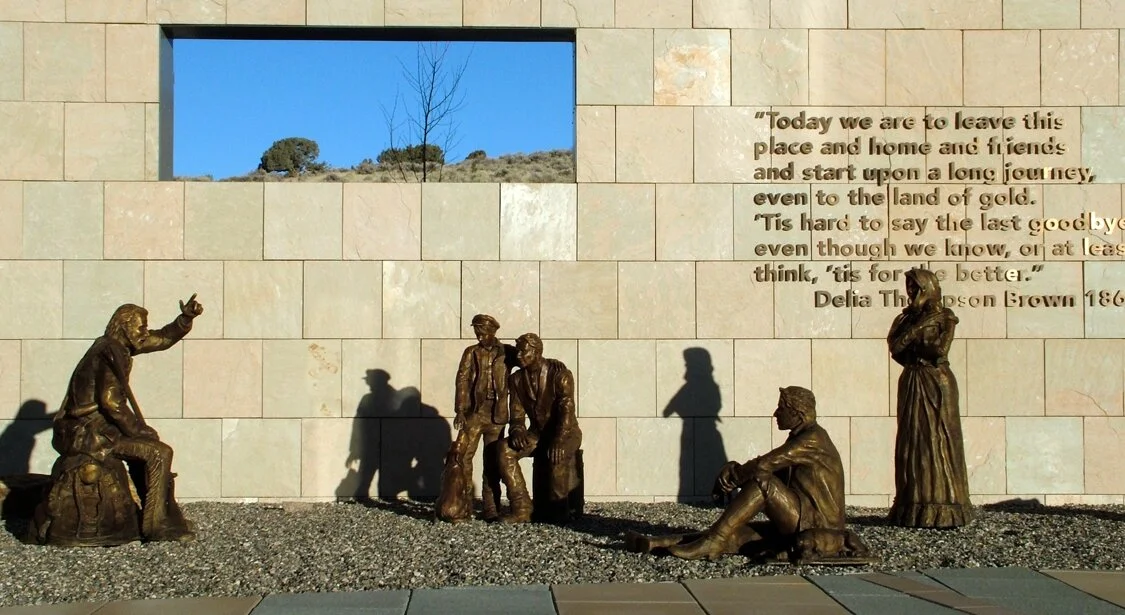Bureau of Land Management (BLM)
California National Historic Trails Interpretive Center
Elko, Nevada
The California National Historic Trail system includes approximately 5,665 miles of emigrant settler trails leading from various points along the Missouri River to California and Oregon. The trail corridor provided passage for over 300,000 emigrants, gold seekers, farmers and western settlers headed to California during the 1840’s, 1850’s and 1860’s. Over 1,000 miles of trail still exist as trail ruts, traces and other obvious remnants. Many of these are located on public lands, managed by the Bureau of Land Management (BLM), stretching across Nevada’s Great Basin.
Due to increased public interest in the California trails history and the importance of protecting the valuable remaining resources of the trail corridor, the BLM developed an The California national Historic Trails Interpretive Center, overlooking the Humboldt River and the California Trails corridor, near Elko, Nevada. In addition, 36 Trail Interpretive Sites along the historic trails corridor throughout the state are also planned as a part of the project.
Multiple task orders were completed through two separate BLM Bureauwide A-E Services IDIQ Contracts to provide a full range of Title I, II and III Services, from initial programming through construction to complete this long-term project spanning 8 years. The first task order commissioned by the BLM was a region wide study to select the optimum location for its proposed interpretive center, the regional study included a 10,000 square mile study area. Using the latest in regional siting methods and multi-jurisdictional community involvement, the multi-disciplinary project team reviewed each site for regional economic development opportunities, integration with the natural environment, connectivity to other satellite historic sites, community support, and potential to develop a sustainable, multidimensional facility. A collaborative planning and design process was developed to collect the ideas and thoughts of the BLM, the Advisory Board and the public; attain consensus; and develop a project plan that met the developed goals for the California National Historic Trails Interpretive Center. Following a series of public workshops, and the Environmental Assessment (EA) process the BLM, selected a site overlooking the Humboldt River and the trail corridor. The planned $18 million Center includes: 16,000 s.f. interpretive center; a unique interpretive plaza and day use area; interpretive trails; amphitheater; site restoration; roads and parking; and complete site infrastructure.
Sustainable development was a goal of the project. LEED™ guidelines have been applied to develop an energy efficient interpretive center and an environmentally sensitive site development.
Quoting a recent BLM document: “California National Historic Trail Interpretive Center will be is world class interpretive facility for the American people, a source of civic pride, an economic engine for the region, and a show case for the BLM”. The center opened in the Spring of 2009.
The project Recipient of two ASLA awards: 2001 Honor Award for Planning and Urban Design and the 2001 Land Stewardship Award, Colorado Chapter, CCASLA.
FiLL p.l.l.c. principal Phil Hendricks Jr. ASLA served as the: Prime IDIQ Contract Manager, principal-in-charge, task order manager, lead planner and landscape architect while at a previous firm (EDAW/AECOM), as task orders on two consecutive BLM Nationwide Architecture Engineering Services IDIQ’s.






